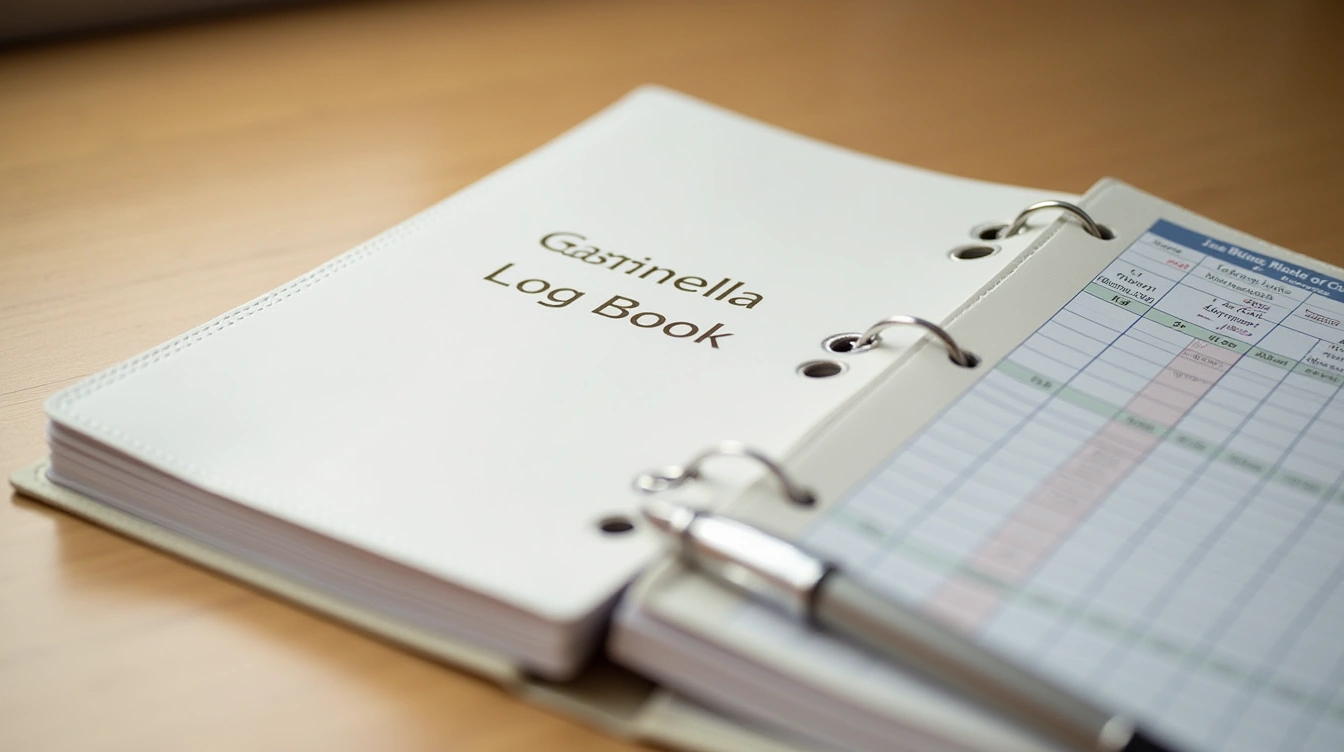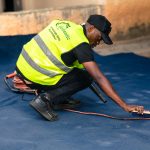Maintaining a Comprehensive Legionella Monitoring Logbook: Your First Line of Defence
Proper legionella documentation protects your business from serious health risks and regulatory penalties. Recent HSE data from 2024 shows that inadequate record-keeping contributed to 73% of water safety prosecutions across UK businesses. A well-maintained Legionella Log Book ensures HSE L8 ACOP compliance while demonstrating your commitment to duty of care. Are your current monitoring records comprehensive enough to withstand regulatory scrutiny?
Understanding HSE L8 ACOP Documentation Requirements
The HSE L8 ACOP establishes clear documentation standards that UK businesses must follow to demonstrate compliance with legionella control regulations. This approved code of practice mandates comprehensive record-keeping as evidence of proper water system management and risk mitigation measures.
Topic to read : 5 Key Benefits of Using Hurricane Rated Commercial Doors
Employers carry legal responsibility for maintaining detailed documentation of all water safety activities, including risk assessments, monitoring schedules, remedial actions, and staff training records. The regulations require businesses to demonstrate a systematic approach to legionella prevention through verifiable documentation trails.
Non-compliance with HSE L8 documentation requirements can result in significant penalties, including prosecution under the Health and Safety at Work Act 1974. Health and Safety Executive inspectors regularly review documentation during site visits, and inadequate records can lead to enforcement notices, substantial fines, or even prison sentences for responsible persons.
Also to see : Transform your workspace with top commercial office cleaning in kent
Our specialized expertise in HSE compliance ensures your documentation meets all regulatory standards while providing practical solutions tailored to your specific operational requirements. We understand the nuances of L8 ACOP requirements and help businesses establish robust documentation systems that satisfy both legal obligations and operational efficiency needs.
Essential Components of Effective Water Safety Record Keeping
Comprehensive water safety records form the backbone of HSE L8 ACOP compliance. Your logbook must capture every critical element of your legionella prevention programme to demonstrate due diligence and protect public health.
A compliant water safety record system encompasses several mandatory categories, each requiring specific documentation standards:
- Temperature monitoring – Hot water storage at 60°C minimum, cold water below 20°C, with readings taken at sentinel outlets and recorded with precise timestamps
- Water flow assessments – Weekly flushing records for infrequently used outlets, documenting flow rates and stagnation point elimination
- Chemical disinfection levels – Chlorine dioxide, chlorine, or alternative biocide concentrations measured at multiple system points with acceptable range confirmations
- Visual system inspections – Monthly checks for corrosion, biofilm formation, scale deposits, and structural integrity issues affecting water quality
- Microbiological testing – Laboratory analysis results, sampling locations, collection procedures, and trend analysis documentation
- Corrective actions – Detailed remedial measures taken when parameters exceed acceptable limits, including timelines and verification of effectiveness
- Authorisation records – Dated signatures from competent persons conducting each monitoring activity, with clear identification and qualification evidence
Establishing Monitoring Frequencies and Responsibility Chains
Determining appropriate monitoring frequencies requires careful analysis of each water system’s risk profile and usage patterns. High-risk systems such as cooling towers typically demand weekly monitoring, while lower-risk domestic hot water systems may require monthly checks. The HSE L8 ACOP emphasizes that frequency should reflect the likelihood of legionella proliferation within specific environments.
The duty holder bears ultimate responsibility for water safety compliance but must appoint a competent person to oversee day-to-day monitoring activities. This competent person requires formal training in legionella awareness, water sampling techniques, and risk assessment protocols. They become the crucial link between operational staff and senior management in maintaining safety standards.
Staff training extends beyond the competent person to include all personnel involved in water system maintenance. Training programs should cover temperature monitoring procedures, system cleaning protocols, and recognition of potential contamination indicators. Regular refresher sessions ensure teams remain current with evolving best practices and regulatory requirements.
Effective escalation processes establish clear communication pathways when monitoring reveals anomalies. These procedures define trigger points for immediate action, specify notification requirements for management, and outline emergency response protocols. Each client receives customized monitoring schedules and responsibility frameworks tailored to their specific site conditions and operational requirements.
Digital vs Paper-Based Documentation Systems
The choice between digital and paper-based documentation systems represents a critical decision for water safety management. Both approaches offer distinct advantages, yet modern regulatory environments increasingly favour digital solutions for their enhanced traceability and accessibility features.
Paper-based systems remain legally valid under HSE regulations and offer immediate accessibility without technological dependencies. However, they present significant challenges in terms of storage space, vulnerability to damage, and difficulty in creating backup copies. The risk of losing crucial compliance records through fire, water damage, or simple misplacement creates substantial regulatory exposure.
Digital documentation systems provide superior traceability through automated timestamps, user identification, and comprehensive audit trails. Modern cloud-based platforms enable real-time access for multiple stakeholders whilst maintaining secure data encryption. These systems significantly reduce administrative costs through automated reminders, digital signatures, and streamlined reporting capabilities.
HSE inspectors increasingly accept and appreciate well-implemented digital systems, particularly when they demonstrate clear data integrity and easy access during compliance reviews. The key lies in selecting platforms that maintain regulatory compliance whilst enhancing operational efficiency and reducing human error in critical water safety documentation.
Common Documentation Pitfalls and How to Avoid Them
Many businesses inadvertently compromise their water safety compliance through preventable documentation errors. Missing temperature readings, unsigned inspection forms, and incomplete corrective action records consistently emerge as the most critical weaknesses during HSE audits.
Inadequate data recording represents perhaps the most widespread issue we encounter. Temperature logs with gaps, chemical test results without timestamps, or monitoring sheets lacking proper identification details can render your entire compliance framework vulnerable. Each missing entry potentially exposes your organisation to regulatory scrutiny and operational risks.
Poor archiving practices compound these challenges significantly. Documents stored inconsistently, outdated records mixed with current information, or digital files without proper backup systems create confusion during inspections. Establishing a systematic approach to record retention ensures your documentation remains accessible and reliable when needed most.
The absence of clear corrective action documentation frequently undermines otherwise comprehensive water safety programmes. When remedial measures are implemented but poorly recorded, inspectors cannot verify your response to identified risks. Every corrective action must include detailed descriptions, completion dates, and verification signatures to demonstrate your commitment to continuous improvement and regulatory compliance.
Your Water Safety Questions Answered

Water safety compliance raises many practical questions for business owners and facility managers. Understanding the essentials of legionella documentation helps you maintain regulatory standards while protecting your premises and personnel.
What should be included in a legionella logbook for HSE compliance?
Your logbook must contain risk assessments, monitoring records, remedial actions, training certificates, and system schematics. Document all temperature checks, cleaning activities, and any identified issues with corresponding corrective measures taken.
How often do I need to update my water safety monitoring records?
Weekly temperature monitoring is typically required, with monthly testing for outlets and quarterly comprehensive reviews. High-risk systems may need daily checks. Always follow your specific risk assessment recommendations.
Who is responsible for maintaining legionella documentation in my business?
The designated responsible person or duty holder must ensure proper documentation. This person should have appropriate training and authority to implement water safety measures and maintain accurate records consistently.
What happens if I don’t have proper legionella records during an inspection?
Missing documentation can result in enforcement action, prohibition notices, or prosecution under HSWA. HSE inspectors expect comprehensive records demonstrating ongoing compliance efforts and risk management activities.
Can I use a digital system for tracking legionella monitoring tasks?
Yes, digital systems are acceptable if they maintain data integrity and accessibility. Ensure your chosen system provides audit trails, backup capabilities, and meets regulatory record-keeping requirements effectively.











